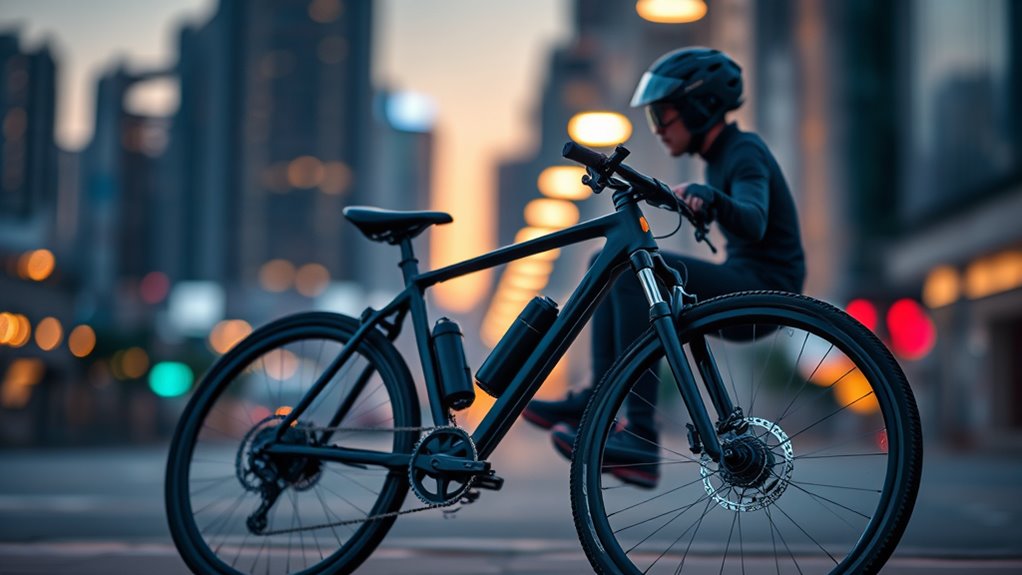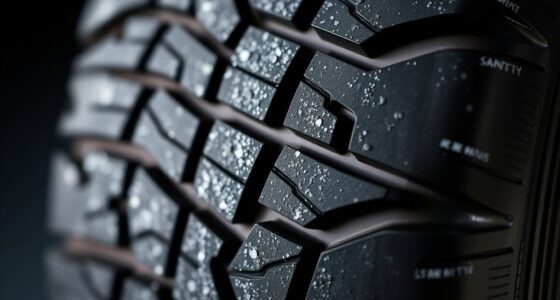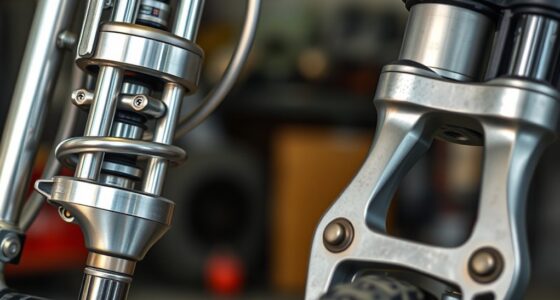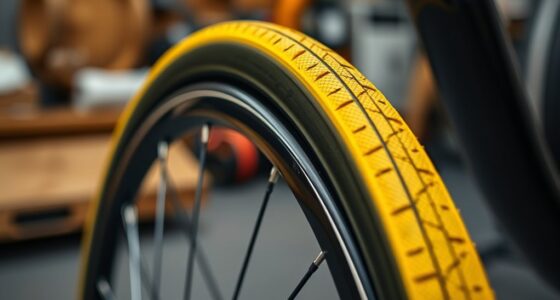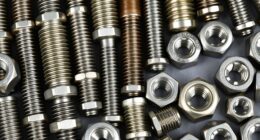Beyond traditional suspension systems, active ride-smoothing tech uses sensors, advanced algorithms, and precise actuators to respond instantly to road conditions, providing a smoother, safer ride. It continuously adapts to imperfections, vehicle dynamics, and passenger inputs, enhancing comfort and stability. While this innovation offers many benefits, it also faces challenges like cost and complexity. To understand how this technology is transforming vehicle design and your driving experience, keep exploring these exciting advances.
Key Takeaways
- Active ride-smoothing systems utilize real-time sensors, controllers, and actuators to adapt suspension responses dynamically, enhancing comfort beyond traditional suspension.
- Advanced control algorithms predict road irregularities and adjust damping forces instantly for a smoother ride.
- Integration with autonomous driving and electric vehicles enables seamless, personalized ride experiences and improved vehicle stability.
- Future developments focus on AI-powered predictive adjustments, eco-friendly components, and customizable ride settings for enhanced performance.
- These technologies are transforming vehicle design, prioritizing passenger comfort, safety, and a more responsive driving experience.
The Evolution of Vehicle Suspension Systems

The evolution of vehicle suspension systems has been driven by a constant quest to improve ride comfort, handling, and safety. Early designs relied on manual tuning, where engineers adjusted suspension components for specific driving conditions, but this limited adaptability. Over time, shock absorber variability became a game-changer, allowing suspension responses to change dynamically based on terrain and driving style. This shift enabled vehicles to adapt more effectively, balancing comfort and stability. You can see this progression in the move from simple, fixed suspensions to sophisticated systems that respond in real-time. As technology advances, suspensions continue to evolve, paving the way for innovations like active ride-smoothing that further enhance your driving experience. Embracing technological innovation in suspension systems allows vehicles to achieve optimal performance and safety in diverse driving environments, with some systems now incorporating active control to automatically adjust to changing conditions. Integrating performance tuning principles can optimize these systems further for enhanced efficiency and responsiveness. Additionally, ongoing research into adaptive suspension systems promises even more refined driving experiences in the future.
How Active Ride-Smoothing Works

Building on the advancements in suspension technology, active ride-smoothing systems take vehicle comfort to the next level by actively adjusting shock absorber behavior in real time. They use sensors to detect road imperfections and vehicle dynamics, then send data to a central controller. This system instantly modulates damping forces to improve ride quality and minimize vibrations. The process relies on seamless system integration, ensuring smooth coordination between components. Here’s a visual overview:
| Sensor Input | Adjustment Output |
|---|---|
| Road surface irregularities | Shock absorber tuning in real time |
| Vehicle speed and weight | Damping force modifications |
| Body roll and pitch | Ride smoothing responses |
| External conditions | System calibration updates |
This dynamic interaction results in a more comfortable, stable ride, adapting instantly to changing conditions. Additionally, Mazda Tuning innovations often incorporate adaptive technologies to further refine ride quality and handling performance, making active ride-smoothing systems an essential feature for modern vehicles.
Key Technologies Driving Innovation
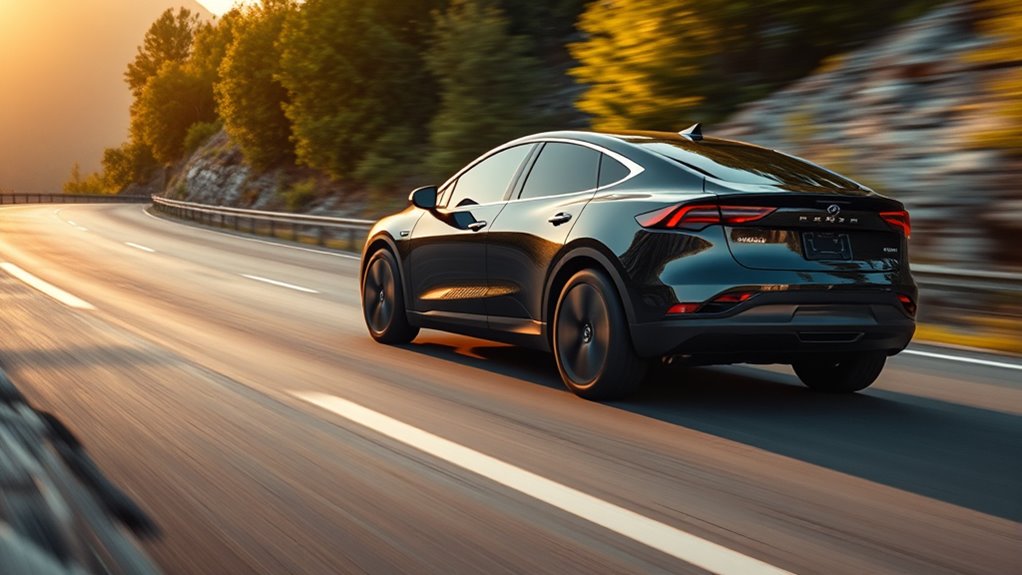
Innovations in active ride-smoothing technology are driven by a combination of advanced sensors, powerful control algorithms, and high-performance actuator components. Smart sensors continuously monitor road conditions, vehicle dynamics, and passenger inputs in real time, providing critical data for adaptive damping systems. These systems adjust damping forces dynamically, optimizing comfort and handling by responding instantly to changing terrain. Control algorithms process sensor data quickly and accurately, predicting road irregularities and adjusting suspension settings proactively. High-performance actuators then implement these adjustments seamlessly. Additionally, the integration of sensor technology enhances the responsiveness and precision of these systems, enabling even more accurate adjustments. Together, these technologies enable precise, real-time control of suspension behavior, reducing vibrations and jolts with remarkable efficiency. This integration of smart sensors, adaptive damping, and advanced control systems forms the backbone of modern active ride-smoothing innovations, pushing the boundaries of vehicle comfort and stability. Additionally, understanding dog names can be useful in selecting a fitting moniker that reflects personality, which parallels how advanced vehicle systems adapt to individual needs.
Benefits for Comfort and Safety
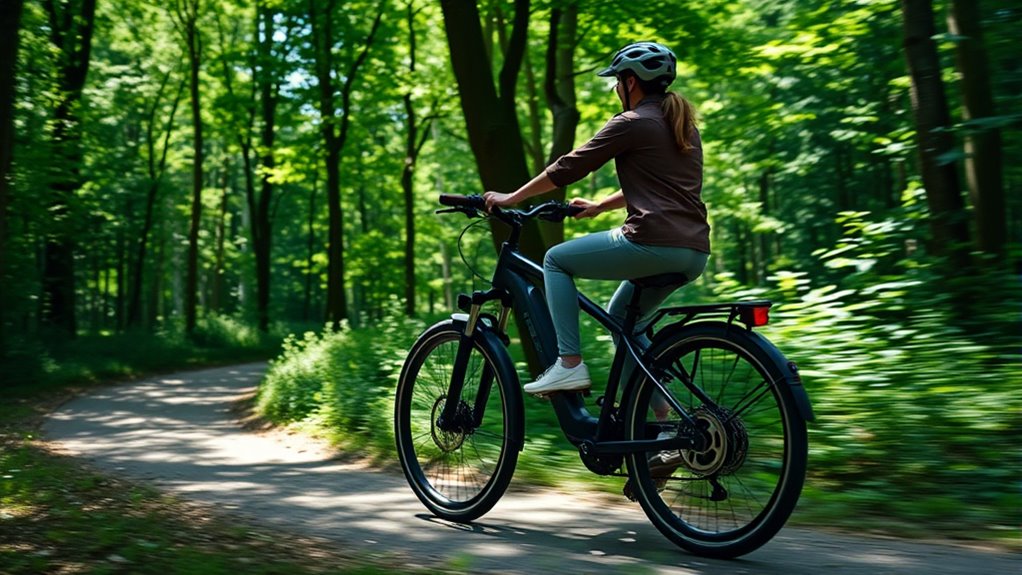
Active ride-smoothing technology markedly enhances both comfort and safety by adapting to road conditions in real time. You’ll notice a smoother ride, as the system reduces vibrations and jolts, improving driver comfort on uneven surfaces. This continuous adjustment minimizes fatigue and distractions, helping you stay focused and relaxed. Beyond comfort, the technology plays a crucial role in accident prevention by maintaining better vehicle stability and control, especially on rough or unpredictable roads. Additionally, road condition awareness systems integrate with ride-smoothing tech to further optimize vehicle response. As a result, you benefit from a safer driving experience, with fewer surprises and a more confident feel behind the wheel. Incorporating real-time adjustments ensures the vehicle responds promptly to changing terrains, further enhancing safety and comfort. This integration of comfort and safety features marks a significant advancement in automotive technology.
Challenges and Limitations of Active Systems

While active ride-smoothing systems offer clear benefits, they also face notable challenges that can impact their effectiveness. One major concern is the cost implications; these systems require advanced sensors, powerful processors, and regular maintenance, making them expensive to install and service. Additionally, reliability concerns arise because active systems depend on complex electronics that can malfunction or become less effective over time, especially in harsh driving conditions. If sensors or actuators fail, ride quality may deteriorate or the system might shut down altogether. This can lead to increased repair costs and reduced confidence in the technology. Furthermore, the integration of advanced tuning options in vehicles like Honda models demonstrates the need for sophisticated electronic controls, which can complicate active system performance. Ensuring proper system calibration is crucial for maintaining optimal function, particularly as these electronic components age or experience wear. The use of specialized maintenance procedures may be necessary to keep these systems operating effectively over time. Additionally, sensor accuracy plays a vital role in the overall performance of active ride-smoothing systems, highlighting the importance of high-quality components. As the personal development industry continues to grow, so does the need for reliable and cost-effective solutions that balance innovation with practicality. You need to weigh these limitations against the comfort benefits, understanding that current active systems are not yet foolproof or cost-efficient enough to fully replace traditional suspension setups.
Future Trends in Ride Enhancement

As technology continues to advance, the future of ride enhancement is poised to become more sophisticated and accessible. You’ll see active systems integrated with autonomous driving, enabling smoother, safer journeys without driver input. Electric vehicles will leverage these innovations to optimize comfort and efficiency. Additionally, the development of eco-friendly refrigerants will contribute to more immersive in-vehicle entertainment experiences, complementing these technological advancements. Incorporating advanced sensor technology will further improve responsiveness and precision in ride adjustments. Future trends include: 1. Real-time adaptive ride smoothing, adjusting instantly to road conditions. 2. Enhanced sensors and AI for predictive adjustments before imperfections are felt. 3. Integration with autonomous driving systems for seamless ride quality. 4. Customizable ride settings tailored to driver preferences and vehicle type. The integration of regional resources will also facilitate the development of tailored solutions for diverse driving environments.
These developments will revolutionize how you experience travel, making rides not only safer and more comfortable but also more aligned with the rising adoption of electric vehicles and autonomous driving technology.
Impact on Automotive Design and Consumer Expectations
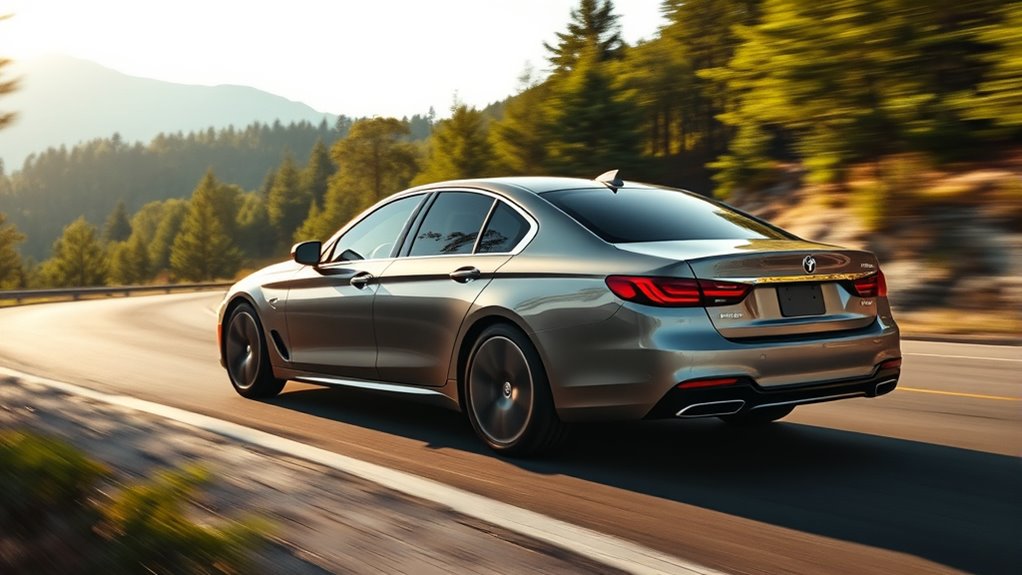
The rise of ride-smoothing technology is transforming automotive design by prompting manufacturers to prioritize comfort and advanced sensory integration. Adaptive damping systems now adjust in real-time, responding instantly to road conditions and driver inputs. This shift leads to sleeker, more streamlined vehicle architectures that house sophisticated sensor integration without compromising style. As a consumer, you now expect smoother rides, personalized to your preferences, with seamless technology that adapts on the fly. Car interiors feature more intuitive interfaces, emphasizing comfort and safety. These innovations also influence exterior design, favoring aerodynamics that complement active systems, while vehicle architecture evolves to accommodate these advanced features seamlessly. Incorporating elements inspired by Bedroom design, such as cozy textiles and natural materials, can inspire the creation of more inviting and comfortable vehicle cabins. Additionally, Volkswagen Tuning techniques can optimize vehicle performance while maintaining the enhanced ride quality. Ultimately, active ride-smoothing tech raises the bar for what you demand from your vehicle, blending performance with premium comfort through smarter, more responsive engineering.
Frequently Asked Questions
How Does Active Ride-Smoothing Technology Compare to Traditional Suspension in Cost?
When comparing active ride-smoothing tech to traditional suspension, you’ll find that the cost comparison often favors traditional systems for affordability. Active tech tends to be more expensive upfront due to advanced sensors and electronics, making it less affordable initially. However, an affordability analysis shows that the enhanced comfort and performance may justify the higher cost over time. Ultimately, you’ll need to weigh initial expenses against long-term benefits to decide what suits your budget best.
Can Active Ride-Smoothing Systems Be Retrofitted Into Older Vehicle Models?
You can retrofit active ride-smoothing systems into older vehicles, but you’ll face some challenges. Retrofit challenges include compatibility issues with existing suspension components and integrating new electronics. You might need custom parts or professional installation to guarantee everything works seamlessly. While it’s possible, consider whether the benefits outweigh the costs and effort, especially since compatibility issues can complicate the process.
What Maintenance Is Required for Active Ride-Smoothing Systems Over Time?
You’ll need to regularly check and calibrate sensors to ensure accurate data, which is vital for peak ride-smoothing. Actuator maintenance is also necessary; keep components clean and inspect for wear or damage. Over time, these systems might require software updates or recalibration to keep them functioning smoothly. Proper maintenance guarantees your active ride-smoothing tech continues to enhance your ride by adapting effectively to road conditions.
Are Active Ride-Smoothing Features Available in All Vehicle Segments and Price Ranges?
You might wonder if active ride-smoothing features are exclusive to luxury vehicles, but that’s not the case. These advanced tech options are increasingly available across various segments, blending luxury features with entry-level affordability. As automakers expand their offerings, you’ll find smoother rides and smarter suspension systems in more affordable models, making this tech accessible to a wider audience. Could this be the future of everyday driving?
How Do Active Systems Impact Vehicle Weight and Fuel Efficiency?
Active ride-smoothing systems can increase vehicle weight due to additional sensors and actuators, which may slightly reduce fuel efficiency. When these systems optimize ride comfort and handling, they often require more energy, leading to increased fuel consumption. However, automakers continually refine these technologies to minimize weight gains, so the impact on vehicle weight and fuel efficiency remains relatively modest while enhancing overall driving experience.
Conclusion
As active ride-smoothing tech continues to evolve, it’s transforming your driving experience from rough seas to smooth sailing. These innovations are not just upgrades; they’re the wave of the future, shaping how you feel behind the wheel and how your vehicle responds. While challenges remain, embracing this technology promises a ride that’s as gentle as a whisper and as safe as a guardian angel. Prepare to enjoy a journey where comfort and safety go hand in hand, steering into a smoother tomorrow.
